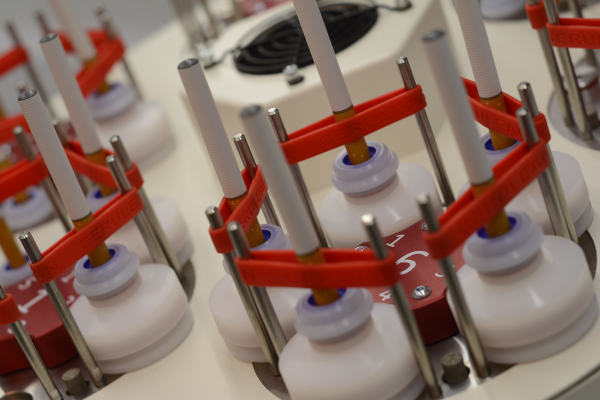A recently developed international standard for e-cigarettes allows scientists to make meaningful comparisons.
By Marina A. Murphy
In less than a decade, electronic cigarettes have captured the attention of the world’s press and become one of the most promising technologies in the field of tobacco harm reduction. But it is only now, after three years of painstakingly drafting, reviewing and voting, that the first international standard1 for e-cigarettes has been developed.
Developed by the ISO (International Organization for Standardization), the standard pertains to the generation of e-cigarette aerosol in the lab for testing purposes. This standard specifies exactly how that should be done. Going forward, this means that when scientists compare research results, they can be sure they are comparing like with like (as they can be sure they have generated the aerosol tested in the same way).
While there are already a number of national standards for e-cigarettes, this is the first international standard to be developed thus far.
AN INTERNATIONAL STANDARD
Not surprisingly, the development of this standard was watched with interest by many groups beyond the usual suspects. E-cigarette and e-liquid manufacturers were naturally interested in developing this standard. “But so too were consumer groups, public health bodies, lab equipment manufacturers and many others, all of whom provided experts for the technical working group responsible for developing the standard,” explains Derek Mariner, who chaired this group. “ISO has a philosophy of inclusiveness, and our working group had the broadest range of stakeholders I have experienced in 14 years working with ISO. It was an absolute pleasure to have worked with such a diverse group of interesting and engaged experts,” he said.
This standard is now available (for a fee) for researchers and scientists around the world to use. It will enable consistency between studies and will support direct comparisons of studies and products. It will also benefit regulators in the enforcement of regulations and of course the manufacturers who need to ensure they are compliant with those regulations. For example, manufacturers in the European Union need to be able to show that the aerosols produced by their devices are produced in a consistent manner.
The standard describes precisely how puffing machines in the lab are set up to puff on e-cigarettes to produce an aerosol for testing. The puffing regime used is not intended to represent real life, since its purpose is to enable comparison of products, but its development has been guided by how consumers use their products. The consumer behavioral data used was developed around cigalike products, which were very popular a few years ago. Consumers using these devices take aerosol into the mouth first and then inhale it into the lungs (“mouth-to-lung” vaping). But direct-to-lung devices are more popular these days, which is why there is a provision in the standard for modification as more relevant and reliable data becomes available. In fact, as a new standard, ISO procedures require that it is reviewed in three years’ time.
This is just the first of a number of international standards being developed for e-cigarettes. A number of proposals have already been made to ISO regarding the development of additional standards, including for analytical methods for measuring levels of nicotine and other substances in e-liquids, and methods for measuring nicotine, metals and carbonyl compounds (e.g., formaldehyde) in e-cigarette aerosols.
ISO—ALL THINGS BEING EQUAL!
ISO was established in 1947 as an international standard-setting body, and even its name is standardized! ISO is not an acronym. The name “International Organization for Standardization” would have different acronyms in different languages, so the ISO founders decided on the name ISO from the Greek word “isos,” which means equal. The connection to standards is that if two things reach the same standard, they should be equal.
ISO is a global network of the world’s leading experts in standardization, which it brings together via its members—the national standards bodies in 162 countries as well as more than 500 liaison organizations from the public and private sectors with a stake in one or more specific aspects of ISO’s work. It is usually at the behest of these members that ISO develops a standard.
In the case of this first international standard for e-cigarettes, it was Coresta, a liaison member of ISO, that recognized the value of developing an international standard for generating e-cigarette aerosols and put forward a proposal that this be done by ISO using a Coresta Recommended Method (CRM 812) as the starting point.
Once the need for a standard has been agreed on by the relevant ISO technical committee or subcommittee, a technical working group of experts is convened and a project leader appointed. In this case, the project leader was Mariner, a principal scientist at British American Tobacco with 14 years of experience developing standards with ISO.
Since 1947, ISO has published 22,436 international standards.
The international standards produced by ISO are all voluntary, which means that ISO is not a regulator in the traditional sense. However, when governments and industries choose to use ISO standards, this can help promote cooperation between countries and facilitate trade, creating facto rules and best practices at the international level, thereby promoting international regulatory cooperation.


